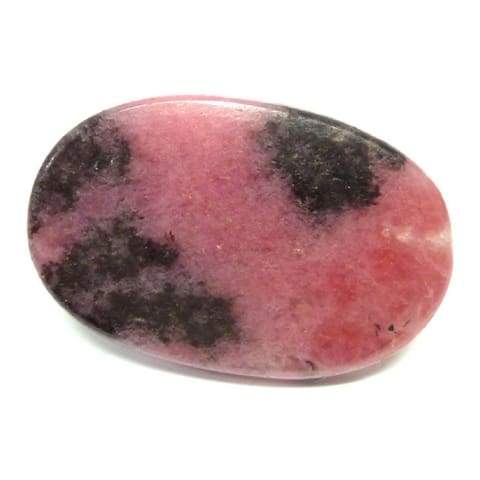Rhodonite
Properties of rhodonite
Rhodonite is a beautiful mineral belonging to the silicate group. This stone is composed primarily of manganese and silicon. Other metals such as iron, magnesium, or calcium may also partially replace the manganese. Depending on the inclusions in its composition, rhodonite can display various colors ranging from gray to yellowish, pink, or brown. The stone sometimes also exhibits a dark red hue, making it a very popular gemstone.
Belonging to the triclinic crystal system, rhodonite has an irregular conchoidal fracture. Its line is white and its luster is vitreous, even pearly. The stone has a density of 3.6 and a hardness of approximately 5.5 to 6.5 on the Mohs scale.
Rhodonite exists in several countries around the world. Its most notable deposits are found primarily in Brazil, the United States, France, Sweden, Russia, and Australia.
History of rhodonite
The first scientific study of rhodonite was conducted by the mineralogist Christoph Friedrich Jasche in 1819. Etymologically, the name rhodonite comes from the Latin word rhodon, likely referring to the stone's pinkish color. Some archaeological evidence suggests that rhodonite was highly valued in ancient Greece and Rome. It would seem, in fact, that at that time, people believed in the stone's protective power against thieves and bandits. For this reason, it appears that it was quite common to use protective amulets made of rhodonite.
Discover our Rose Quartz and Rhodonite ring for Love and Harmony

The Russians had a particular fondness for rhodonite. They considered it a precious stone. As such, it has been widely used for decoration and the making or ornamentation of art objects such as vases, statuettes, obelisks, cups, and more. Russian artisans have even developed a mosaic technique for plastering sheets of semiprecious stones like rhodonite onto stone or bronze objects or pieces of jewelry.
Benefits of rhodonite
Lithotherapy attributes many virtues to rhodonite. On a physical level, it is said to regulate heart rhythm and calm stress. It is also recommended for strengthening immunity and combating inflammation of the skin and joints. Placing a rhodonite on the heart before going to sleep is believed to promote peaceful and restorative sleep.
Emotionally and spiritually, rhodonite helps neutralize the harmful effects of negative emotions like anxiety. It also helps restore courage and self-confidence during difficult times. As a pink stone, it is said to be beneficial for love and emotional connections, fostering understanding and trust within a relationship.
Discover our Elephant mala bracelet with Amazonite and Rhodonite

Rhodonite would also be very helpful for students because it promotes learning and stimulates memory. People who have suffered emotional trauma or injury would do well to keep a rhodonite close at hand to regain their joy for life and overcome emotional disabilities.
On a karmic level, rhodonite is beneficial to the Heart Chakra. It is favorable to the astrological signs of Aries, Cancer, Capricorn, and Gemini.
Rhodonite is purified by immersing the stone in demineralized water for a few hours. To recharge it, simply expose it to moonlight on a quartz crystal.



















